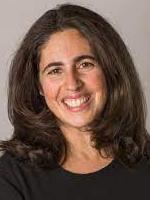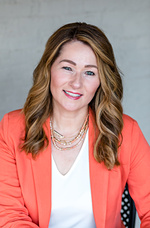

Tech-Based Literacy Resources and Practices With Special Promise 2021 |
Listen and learn : Lecture
Mark Gura Dr. Michele Haiken Naomi Harm Jeremy Macdonald Rusty Nye Mark Resnick Dr. Evelyn Wassel, Ed.D.
What’s new, exciting and inspiring in literacy instruction? Members of the ISTE Literacy PLN and invited guests will present emerging technology-based resources and practices with high potential to improve and transform learning and teaching. Leave this session with ideas, insights and resources ready to impact your classroom and practice.
| Audience: | Coaches, Curriculum/district specialists, Teachers |
| Skill level: | Intermediate |
| Attendee devices: | Devices not needed |
| Topic: | Instructional design & delivery |
| Grade level: | PK-12 |
| Subject area: | Language arts |
| ISTE Standards: | For Coaches: Digital Age Learning Environments
Learner
Empowered Learner
|
| Additional detail: | ISTE author presentation |
| Influencer Disclosure: | This session includes a presenter that indicated a “material connection” to a brand that includes a personal, family or employment relationship, or a financial relationship. See individual speaker menu for disclosure information. |
PURPOSE/RATIONALE: The body of resources available to teachers of Literacy, as well as practices in which they are implemented and applied to teaching and learning, is a moving target. New and innovative resources are continually being developed and offered for use. This session will support all teachers who attend in understanding and finding their way through this overwhelming body of possibilities, revealing to them new resources, many of them free, designed to inspire students and guide them in learning Literacy skills.
PARTICIPANT OUTCOMES: Participants will gain insight into the types of digital resources for Literacy educators that are emerging; will understand how they are evolving and reflect what’s needed in terms of the latest goals and trends in instruction and how technology is being adapted to produce resources that address them. Further, participants will leave the session with ideas and recommendations about specific resources and practices in which to apply them that they may try in their own practice and efforts to refine and improve it.
COLLABORATIVE METHOD and APPROACH: The Literacy PLN would like to offer this session so that colleagues may benefit from the significant body of expertise, experience, and interests of its membership. These represent a deep source of support and advice on what’s most important to see, understand, and consider using in today’s Literacy Instruction. The PLN will reach out to its membership for suggestions based on direct experience for resources and practices to include in this session. The leadership committee will select the very most significant of these for inclusion and will facilitate a spirited presentation and discussion of these for attendees. Particular attention will be paid to easy to use, impactful, and free or low cost options, as well as practices that make the most of them.
ANCILLARY OUTCOME: Importantly, preparation for – presentation of – and curating, archiving, and publishing of the content of this session will guide the Literacy PLN in its focus and efforts this coming year and beyond, and enable it to provide important leadership in the essential field of Literacy Instruction.
- The session will start with a brief (5 minute) introduction to establish context for the content to come and introduce the presenters. -
- The session will present 3 – 4 high potential instructional resources and practices that involve their use (45 minutes, total). Each resource and related practice will be given 10 – 15 minutes. The audience will be encouraged to contribute to the discussion, sharing their own experience with the resources (or similar resources) and offering their own reflections on the use of these in the classroom. Below is a sample of the body of resources the PLN is currently compiling as it prepares this session: However, planning for this session will be an ongoing process so that the appearance of newer resources and implementation practices may be included, making our late June presentation especially relevant. 10 minutes will be allotted for each resource and related practice.
- 10 minutes will be formally allotted for audience Q & A. However, the audience will be encouraged to interact with the presenters during the presentation, as well, with a public conversation serving as the model for implementation of the session.-
- The session will wrap up with a very brief discussion of how the participants may continue to work with the PLN (as online/connected contributing colleagues) to refine and expand this focus body of resources and practices - RESOURCE TYPES HIGHLIGHTED IN THIS SESSION will include: Digital, multi-media writing and composing platforms (text writing, illustration and visual composition, sound and voice, etc.); Literacy focused Gaming resources; Imagining and Thinking resources to build students’ close reading, writing, and critical thinking skills across subjects; Trending Technologies (like Robotics and Augmented/Virtual Reality) for which important connections to Literacy learning are emerging, and others
Book: Teaching Literacy in the Digital Age: Inspiration for All Levels (ISTE 2014). This recently published compendium (edited by the President of the ISTE Literacy PLN with contributions from members of the PLN) presents a full body of practices and resources that reflect the profound ways that technology is positively transforming Literacy Education. - Articles:- Kennewell, S., Tanner, H., Jones, S., & Beauchamp, G. (2008). Analysing the use of interactive technology to implement interactive teaching. Journal of Computer Assisted Learning, 24(1), 61–73. (In Kervin, et al.)- Labbo, L. (2006). Literacy, pedagogy and computer technologies: toward solving the puzzle of current and future classroom practices. Australian Journal of Language and Literacy, 29(3), 199-209. (In Kervin, et al.)- Zammit, K. & Downes, T. (2002). New learning environments and the multiliterate individual: a framework for educators, Australian Journal of Language and Literacy, m25(2), 24-36. (In Kervin, et al.) Preparing students for careers that don’t even exist is a daunting practice. Many have commented that it is the teachers’ responsibility to include new technologies in the everyday curriculum in order to adequately prepare them for their future lives- Kervin, L., Verenikina, I., Jones, P. & Beath, O. (2013). Investigating synergies between literacy, technology and classroom practice. Australian Journal of Language and Literacy, 36 (3), 135-147. Teacher efficacy and access to the latest resources to utilize HOTS is remains a defining issue- Haas, C. (2009). Writing technology: Studies on the materiality of literacy. New York: Routledge. Understanding “literacy” in the 21st Century context means understanding the technologies that support it - Powell, D. (2013). Learning Space: Perspectives on Technology and Literacy in a Changing Educational Landscape. Retrieved September 30, 2014 from http://www.literacyandtechnology.org/uploads/1/3/6/8/136889/jlt_v14_2.pdf#page=2. As students matriculate into the secondary ranks, both teaching digital literacy skills and providing all students with the tools necessary to implement those skills



Naomi Harm is an EdTech influencer, women in leadership strategist and entrepreneur. She has a passion and drive for instigating STEM innovation and future proofing educational leadership into all of her professional learning offerings. Naomi welcomes every opportunity to share her researched-based expertise on brain-based teaching and learning instructional strategies, personalized learning techniques, and student choice and voice activities through innovative design thinking projects. She is dedicated in providing ALL students of every ability the access and equity to STEM teaching and learning resources and learning experiences, as to continue to motivate them with building their lifelong learning confidence.


